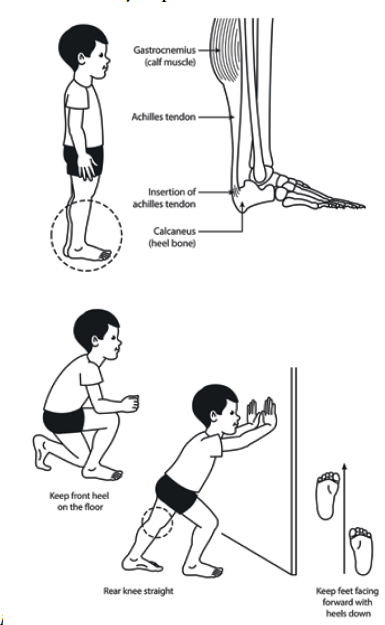Stay informed and empowered on your arthritis journey.
Sign up for the Arthritis Australia newsletter today and receive the latest updates, expert insights, and practical tips delivered straight to your inbox.
Sever’s disease causes pain in the bone at the back of the heel. This pain occurs because of a mismatch between the growth of the calf bones and muscles.
Children who are involved in running and jumping sports are those who tend to get Sever’s disease most often.
Typically, the pain at the back of the heel is worse after physical activity and improves with rest. Sever’s disease can affect one or both feet. Sever’s disease is slightly more common in boys than girls and usually affects children aged 8 – 12 years. It is uncommon in older teenagers as the heel bone usually finishes growing by age 15 years.
 What causes Sever’s disease?
What causes Sever’s disease?During a growth spurt, the bones grow first and the muscles and tendons have to catch up. The Achilles tendon is a large tendon which attaches the muscles of the calf to the back of the heel. In Sever’s disease, the heel bone becomes sore and swollen where the Achilles tendon attaches to it. Children who are involved in running and jumping sports are those who tend to get Sever’s disease most often. These include basketball, soccer, Australian Rules football and some forms of athletics. Wearing shoes with stops (studs) increases the risk of developing Sever’s disease.
Your child’s doctor will diagnose Sever’s disease from the typical symptoms and appearance. There is rarely a need for blood tests or x-rays.
Your local doctor or physiotherapist can give you advice about managing Sever’s disease. Specialist referral is only required for very unusual cases. Rest and cold packs on the painful area can help during flare ups. Cushion pads in the heels of shoes (available from pharmacists, podiatrists and physiotherapists) may help. Stretching exercises of the Achilles tendons are important. A physiotherapist can teach these to you and your child. Generally, medication is not recommended. Paracetamol (e.g. Panadol) or anti-inflammatory medicines such as ibuprofen (e.g. Nurofen) may be used for short periods of bad pain. There is no evidence that complementary medicines, including acupuncture, are helpful for Sever’s disease.
Reassure your child that the pain will go away in time. Seeing a physiotherapist can be helpful to learn ways to stretch the Achilles tendon and keep pain under control. Encourage your child to use other strategies, such as rest and cold packs, to manage their pain.
Sever’s disease will go away with time as growth of the heel bone finishes. In the meantime, pain may be worse with activity but there are things that you and your child can do to make life easier. Changes in sporting activities may help to reduce pain. Fewer running and jumping activities will result in less pain. Continuing to do these activities will not damage your child’s foot, but may make the pain worse. Increasing other activities may be important for your child in the meantime, such as swimming or cycling. It may be helpful for coaches and sports teachers to be aware of your child’s condition. Reducing the use of shoes with studs can make a big difference.
The pain of Sever’s disease will disappear with time but may come back at times. Sever’s disease often lasts two to three years. Once your child has finished their growth spurt the pain will go away. Your child will not have any long term problems because of this condition.
CONTACT YOUR LOCAL ARTHRITIS OFFICE FOR MORE INFORMATION AND SUPPORT SERVICES.Arthritis can happen at any age. Here, you can find management and treatment information specifically created for the more than 6,000 Australian children living with...
Here is our 10 steps checklist to help you live with arthritis.
Arthritis Australia advocates to government, business, industry and community leaders to improve care, management, support and quality of life for people with arthritis..
Regular updates, news and research findings delivered to your inbox:
Already have an account? Login
Not registered? Create an account
Enter your email address and we'll send you an email with a link to reset your password.
The confirmation link is either expired or invalid.
An email has been sent to to confirm your details. Please click the link in the email to finish your account setup.
To finish your account setup, you must verify your email address.
Arthritis Australia is not responsible for the content or availability of linked sites.